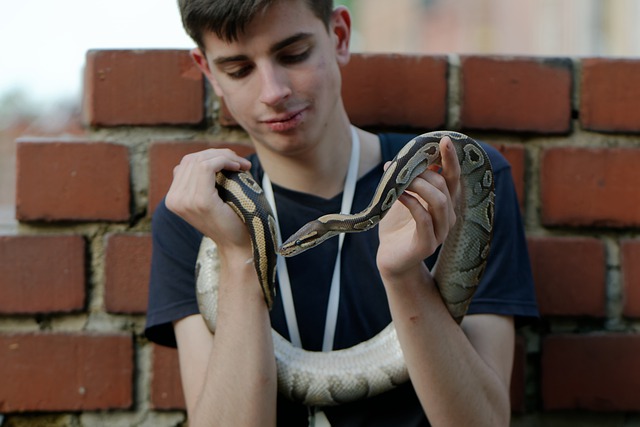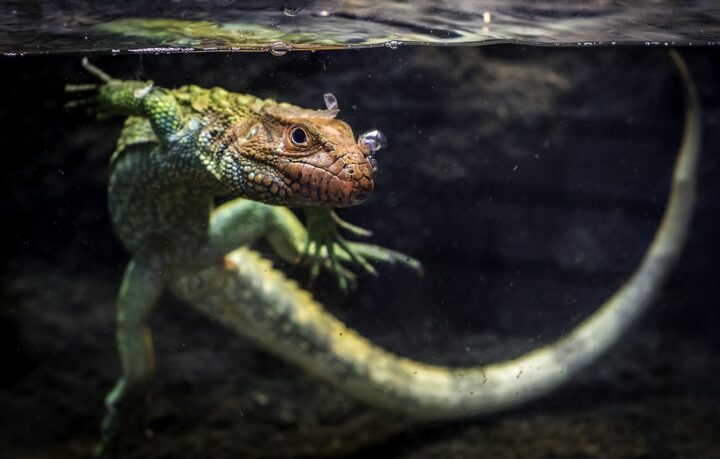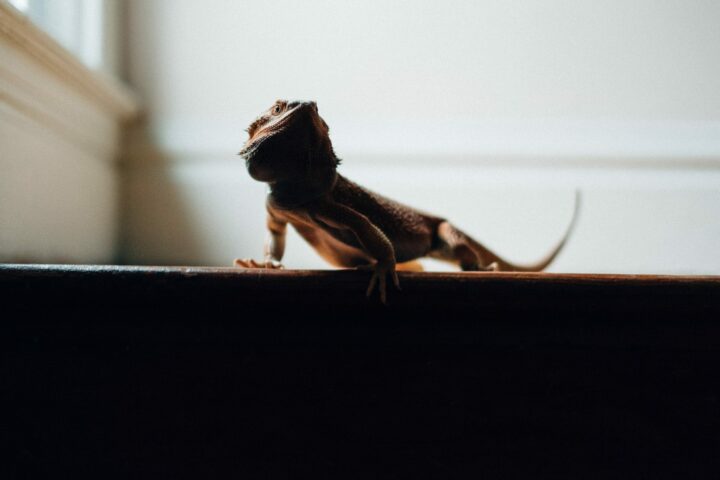Discovering the specific care requirements for popular reptile species like bearded dragons, leopard geckos, and ball pythons is crucial for any reptile enthusiast or aspiring reptile owner. In this comprehensive guide, we delve deep into the world of home reptiles, providing you with expert insights, tips, and tricks to ensure the health, happiness, and thriving of these captivating creatures.
Whether you’re a beginner or an experienced reptile enthusiast, this article will equip you with the knowledge to create the perfect environment and meet the unique needs of bearded dragons, leopard geckos, and ball pythons.
What Makes Bearded Dragons, Leopard Geckos, and Ball Pythons So Popular?
Bearded dragons, leopard geckos, and ball pythons have captivated the hearts of reptile enthusiasts worldwide, and it’s no surprise why they are so popular. These fascinating creatures showcase a unique combination of striking appearances, intriguing behaviors, and relatively manageable care requirements.
Bearded dragons with their majestic spikes and gentle demeanor, leopard geckos with their mesmerizing patterns and nocturnal habits, and ball pythons with their sleek bodies and docile nature, all offer an enchanting experience for reptile lovers.
Whether you’re drawn to their impressive colors, their charming personalities, or their ease of handling, these reptile species have become beloved companions for countless enthusiasts.
What Are the Key Considerations Before Bringing Home a Bearded Dragon, Leopard Gecko, or Ball Python?

Before welcoming a bearded dragon, leopard gecko, or ball python into your home, it’s essential to consider a few key factors. First and foremost, educate yourself about the specific needs of each reptile species, including their habitat requirements, dietary preferences, and potential lifespan.
Assess your available space and resources to ensure you can provide a suitable enclosure, along with the necessary heating, lighting, and humidity control.
Additionally, consider the time and commitment required for their care, as reptiles thrive with regular interaction, proper feeding schedules, and a clean living environment.
What Is the Optimal Habitat Setup for Bearded Dragons?
Creating an optimal habitat for your bearded dragon involves replicating their natural environment while ensuring comfort and safety. Start with a spacious enclosure, preferably a terrarium, equipped with proper ventilation and secure locking mechanisms.
Line the bottom with a substrate like reptile carpet or non-adhesive shelf liner for easy cleaning. Provide a basking spot with a heat lamp to maintain a temperature gradient, allowing your bearded dragon to thermoregulate.
Place branches, rocks, and hides for climbing, perching, and hiding, mimicking their natural habitat. Install a UVB light to provide essential vitamin D3 synthesis. Lastly, include a shallow dish for water and ensure a consistent supply of fresh, chlorine-free water. With a thoughtfully designed habitat, your bearded dragon can thrive and enjoy their surroundings.
How Should I Set Up a Suitable Enclosure for Leopard Geckos?
Leopard geckos require a well-designed enclosure that caters to their unique needs and preferences. Begin with a terrarium made of glass or plastic, providing ample space for them to explore.
Line the floor with a substrate like paper towels or reptile carpet, avoiding loose substrates that can cause impaction if ingested. Offer multiple hiding spots using caves, logs, or half logs, allowing your gecko to feel secure.
Maintain a temperature gradient within the enclosure by using an under-tank heater on one side and a cool area on the other. A small dish of calcium supplement and water should be readily available.
How to Create a Perfect Living Space for Ball Pythons?
Crafting the perfect living space for your ball python involves replicating their natural habitat and providing a stress-free environment. Begin with an appropriately sized enclosure that offers ample room for your snake to move around comfortably. Use a substrate such as aspen bedding or cypress mulch that retains humidity without being excessively damp.
Create hiding spots using caves, logs, or commercial snake hides to provide a sense of security. Maintain a temperature gradient with a warm side, where a heating pad or heat lamp is positioned, and a cool side for thermoregulation. Ensure humidity levels are within the required range by misting the enclosure or using a humidity box.
Finally, a water bowl large enough for your ball python to soak in should be available at all times.
What Should I Feed My Bearded Dragon, Leopard Gecko, or Ball Python?
Proper nutrition is vital for the health and well-being of your bearded dragon, leopard gecko, or ball python. Bearded dragons are omnivorous and require a diet that consists of a variety of insects, leafy greens, and occasional fruits. Ensure a balanced intake of calcium and vitamin D3 by dusting their food with appropriate reptile supplements.
Leopard geckos are insectivores and thrive on a diet primarily composed of appropriately sized insects like crickets and mealworms. Additionally, provide a calcium supplement to prevent metabolic bone disease.
Ball pythons are carnivores, primarily consuming small rodents like mice or rats. These gentle snakes are known for their docile nature and lack of offensive scent. Offer appropriately sized prey items and ensure a regular feeding schedule. Remember to provide fresh water for all reptiles, ensuring it is clean and accessible.
What Are the Importance of Temperature and Humidity Control for Reptiles?
Temperature and humidity control are crucial aspects of reptile care, directly impacting their overall health and well-being. Reptiles are ectothermic, relying on their environment to regulate their body temperature.
Maintaining an appropriate temperature gradient within their enclosure allows them to thermoregulate, which is essential for digestion, metabolism, and overall physiological functions. Similarly, humidity levels must be suitable for the particular reptile species, as it affects shedding, hydration, and respiratory health.
Regular monitoring and adjustments are necessary to ensure the correct temperature and humidity ranges are consistently maintained, creating a comfortable and supportive environment for your reptile companion.
Do Bearded Dragons, Leopard Geckos, or Ball Pythons Require UVB Lighting?

UVB lighting plays a crucial role in the overall health and well-being of bearded dragons, leopard geckos, and ball pythons. These reptile species, especially bearded dragons, require exposure to UVB light to synthesize vitamin D3, which aids in calcium absorption and prevents metabolic bone disease.
Leopard geckos and ball pythons also benefit from low to moderate levels of UVB, although their requirements are less pronounced compared to bearded dragons. Providing UVB lighting through fluorescent tubes or compact bulbs designed for reptiles helps replicate the natural sunlight they would receive in the wild.
It’s important to ensure the UVB light source is replaced according to the manufacturer’s recommendations to maintain its effectiveness.
How to Help Your Reptile Through the Molting Process?
The molting process is a natural occurrence for reptiles, and understanding how to support your reptile through this phase is crucial. During molting, reptiles shed their old skin to make way for new growth.
To assist your reptile, ensure they have access to a humid hide or moist substrate, which helps soften the old skin and facilitate shedding. Avoid handling your reptile during this time, as their skin may be sensitive.
Offer a nutritious diet to support healthy skin and shedding. If your reptile experiences difficulty shedding, you can provide a gentle misting or a warm soak to aid in the process.
How to Deal with Social Needs of Bearded Dragons, Leopard Geckos, and Ball Pythons?
While reptiles may not have the same social needs as dogs or cats, they still benefit from appropriate social interaction. Bearded dragons, leopard geckos, and ball pythons can recognize their owners and enjoy observing their surroundings.
Spend time near their enclosure, talking to them in a calm and soothing manner. Offer enrichment through hiding spots, climbing structures, and toys. Monitor their response to handling, as some reptiles may tolerate or even enjoy gentle interaction.
However, always prioritize their comfort and never force handling if they show signs of stress or discomfort. By providing a stimulating and respectful social environment, you can enhance the well-being of your reptile companion.
What are the Handling Tips and Tricks to Interact Safely with Your Reptile?
Handling your reptile can be a rewarding and enjoyable experience, but it’s important to prioritize their safety and well-being. Start by observing their behavior and understanding their comfort level with handling. Support their body and avoid gripping or squeezing tightly.
Wash your hands before and after handling to prevent the transmission of bacteria. Ensure a calm and quiet environment to reduce stress. Gradually increase handling duration over time to allow your reptile to acclimate. Respect their cues and avoid handling if they exhibit signs of stress or aggression.
Finally, be mindful of the reptile’s size and strength, especially with larger species like bearded dragons or ball pythons. By following these tips and tricks, you can safely interact with your reptile and build a trusting relationship.
What are the Common Health Issues in Bearded Dragons?
Bearded dragons, like any pet, are susceptible to various health issues, and being aware of them can help you provide prompt care. Respiratory infections, often caused by improper temperature or humidity, can lead to symptoms like wheezing or nasal discharge.
Metabolic bone disease can occur due to calcium or vitamin D3 deficiencies, resulting in weak bones and deformities. Parasites such as mites or worms can also affect bearded dragons, causing digestive issues or skin irritation.
Other potential health concerns include impaction from ingesting substrate or foreign objects and mouth infections. Regular veterinary check-ups, a proper diet, and maintaining suitable environmental conditions are essential for preventing and addressing these health issues.
What Every Owner Should Watch Out For their Leopard Gecko Health?
As a responsible leopard gecko owner, it’s essential to be vigilant about their health and watch out for any signs of potential issues. Pay attention to their appetite and eating habits, as a sudden decrease in appetite may indicate an underlying health problem.
Monitor their weight regularly to ensure they are maintaining a healthy body condition. Look for signs of dehydration, such as sunken eyes or wrinkled skin, and provide a humid hide and fresh water to prevent dehydration.
Keep an eye out for skin abnormalities, including sores, blisters, or discoloration. Respiratory problems, digestive issues, and parasitic infections can also occur in leopard geckos.
What are the Common Problems on Ball Pythons and How to Address Them?

Ball pythons may encounter several common problems, and being aware of them can help you address these issues promptly. Respiratory infections, often caused by incorrect temperature or humidity levels, can result in symptoms like wheezing or excessive mucus.
Another common problem is regurgitation, which can occur due to stress, improper feeding, or incorrect husbandry practices. Ball pythons may also experience issues with shedding, such as retained eye caps or incomplete sheds. Parasites, such as mites or ticks, can infest ball pythons and cause discomfort.
Additionally, obesity and poor appetite can affect these snakes. Regular veterinary check-ups, maintaining appropriate environmental conditions, and providing a proper diet are key to preventing and managing these common problems.
What are the Advanced Tips and Techniques for Reptile Enthusiasts?
| Species | Habitat Setup | Diet |
|---|---|---|
| Bearded Dragons | Spacious terrarium, substrate, basking spot, branches and hides, UVB lighting | Insects, leafy greens, occasional fruits, calcium and vitamin D3 supplements |
| Leopard Geckos | Terrarium, substrate, hiding spots, temperature gradient, calcium supplement | Insects, calcium supplement |
| Ball Pythons | Appropriately sized enclosure, substrate, hiding spots, temperature gradient, humidity control | Small rodents, water bowl for soaking |
| Respiratory Infections | Proper temperature and humidity control, regular veterinary check-ups | Observe appetite, monitor weight, provide a humid hide and fresh water |
| Common Problems | Molting difficulties, social needs, handling safety, common health issues | Advanced tips and techniques for reptile enthusiasts |
For reptile enthusiasts looking to delve deeper into their passion, there are advanced tips and techniques to enhance their reptile care expertise. Experiment with different enclosure designs, incorporating naturalistic elements like live plants or custom backgrounds.
Explore advanced lighting setups, such as full-spectrum lighting or specialized UVB bulbs, to provide an enriched environment. Research and experiment with varied diets, including gut-loading prey insects or introducing appropriate supplements. Learn about reptile behavior and communication to better understand their needs and preferences.
Attend reptile expos or join online communities to connect with fellow enthusiasts and exchange knowledge. Engage in ongoing learning, stay updated with scientific research, and challenge yourself to continually improve your reptile care practices.
Concluding remarks
In conclusion, caring for bearded dragons, leopard geckos, and ball pythons requires knowledge, dedication, and a genuine passion for these fascinating reptiles. By understanding their specific care requirements, such as habitat setup, diet, temperature control, and social needs, you can create a thriving environment for them.
Regular monitoring of their health and addressing common issues promptly is crucial for their well-being. Whether you’re a beginner or an experienced reptile enthusiast, there is always room to learn and improve, with advanced tips and techniques available to enhance your reptile care skills.
By providing the best possible care and nurturing a strong bond with your reptile companions, you can embark on a rewarding journey of sharing your life with these incredible creatures.




